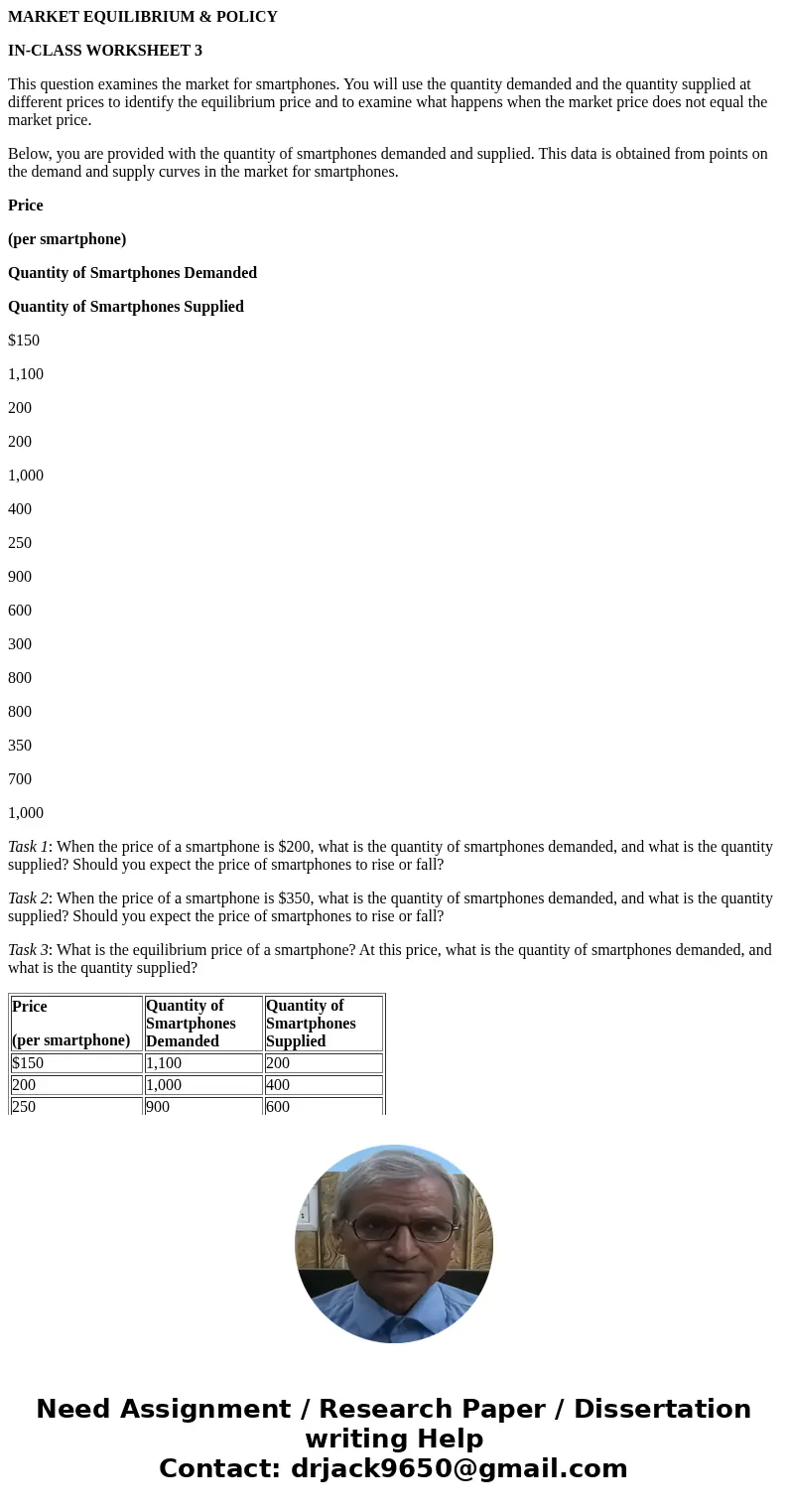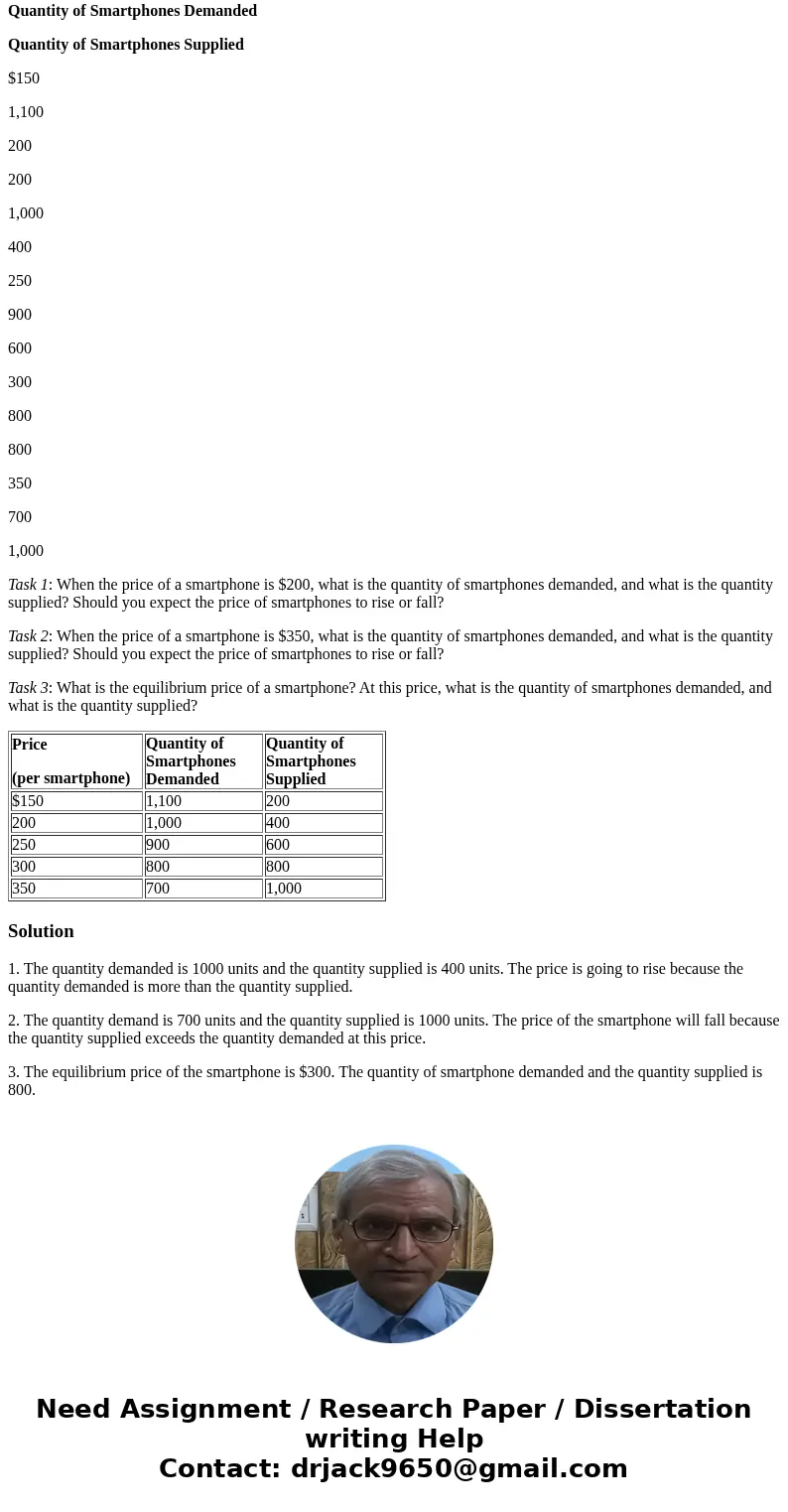MARKET EQUILIBRIUM POLICY INCLASS WORKSHEET 3 This question
MARKET EQUILIBRIUM & POLICY
IN-CLASS WORKSHEET 3
This question examines the market for smartphones. You will use the quantity demanded and the quantity supplied at different prices to identify the equilibrium price and to examine what happens when the market price does not equal the market price.
Below, you are provided with the quantity of smartphones demanded and supplied. This data is obtained from points on the demand and supply curves in the market for smartphones.
Price
(per smartphone)
Quantity of Smartphones Demanded
Quantity of Smartphones Supplied
$150
1,100
200
200
1,000
400
250
900
600
300
800
800
350
700
1,000
Task 1: When the price of a smartphone is $200, what is the quantity of smartphones demanded, and what is the quantity supplied? Should you expect the price of smartphones to rise or fall?
Task 2: When the price of a smartphone is $350, what is the quantity of smartphones demanded, and what is the quantity supplied? Should you expect the price of smartphones to rise or fall?
Task 3: What is the equilibrium price of a smartphone? At this price, what is the quantity of smartphones demanded, and what is the quantity supplied?
| Price (per smartphone) | Quantity of Smartphones Demanded | Quantity of Smartphones Supplied |
| $150 | 1,100 | 200 |
| 200 | 1,000 | 400 |
| 250 | 900 | 600 |
| 300 | 800 | 800 |
| 350 | 700 | 1,000 |
Solution
1. The quantity demanded is 1000 units and the quantity supplied is 400 units. The price is going to rise because the quantity demanded is more than the quantity supplied.
2. The quantity demand is 700 units and the quantity supplied is 1000 units. The price of the smartphone will fall because the quantity supplied exceeds the quantity demanded at this price.
3. The equilibrium price of the smartphone is $300. The quantity of smartphone demanded and the quantity supplied is 800.


 Homework Sourse
Homework Sourse